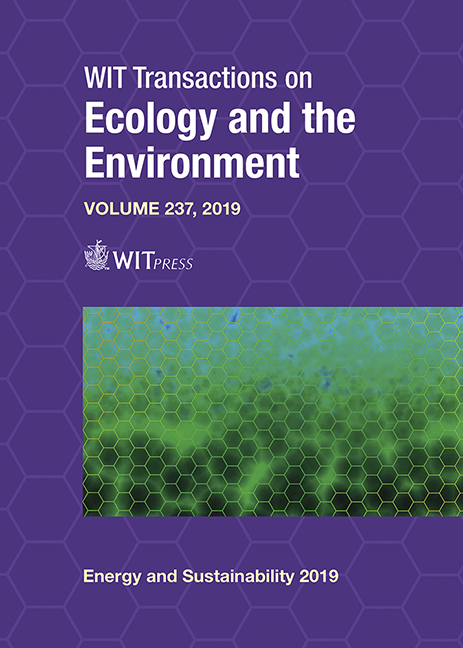COMPARISON OF POTENTIAL MATERIALS FOR PRODUCER GAS WET SCRUBBING IN PILOT-SCALE GASIFICATION UNIT
Price
Free (open access)
Transaction
Volume
237
Pages
10
Page Range
87 - 96
Published
2019
Size
781 kb
Paper DOI
10.2495/ESUS190081
Copyright
WIT Press
Author(s)
JAKUB ČESPIVA, JAN SKŘÍNSKÝ, JÁN VEREŠ
Abstract
The wet scrubber technology for tar content decrease can bring a necessary cleaning solution for the biomass gasification product syngas. This paper investigates and compares several materials suitable for a tar capture. The scrubbing liquids were easily accessible and economically affordable liquids, some of which are known to possess a solving effect on the tar compounds. There are two organic chemicals: acetone and propane-2-ol, demineralised water and, as a representative of oily substances, rhodorsil oil. The investigation was divided in two parts. The first part was a producer gas partial online sampling through a set of five impinger bottles, each filled with 100 ml of the investigated material. In the second part of the investigation, all samples underwent a laboratory analysis, the results of which had given information about the trapped tar content after the sampling. The analysis consisted of weight difference, ultimate tar content and tar solvency activity examining. Of the tested scrubbing liquids, acetone showed a good capturing activity of tar, which was around 7.7 g·m-3. Even better results were detected in the case of propane-2-ol where 12.5 g·m-3 was captured. On the other hand, water showed no solving activity and the tar capture rate was significantly lower – that is, 1.2 g·m-3. Surprisingly, similar results occurred in the case of rhodorsil oil. The downside of the materials with good solubility is a high evaporation tendency, which may complicate their final practical usage. The presented values in this paper are related to normal conditions of wet gas (temperature of 273.15 K; pressure of 101,325 Pa).
Keywords
wet scrubbing, scrubbing liquids, tar, tar removal, gasification, biomass, comparison





